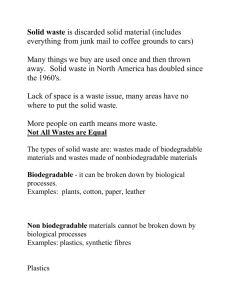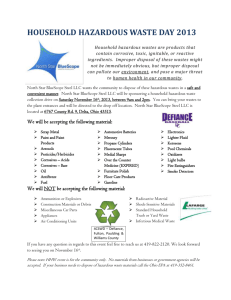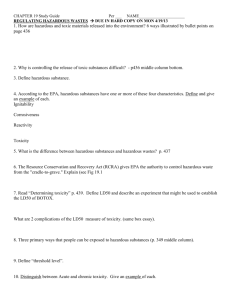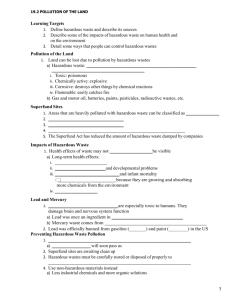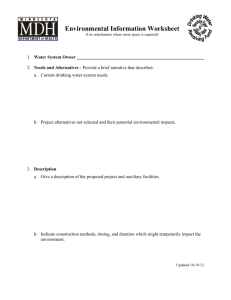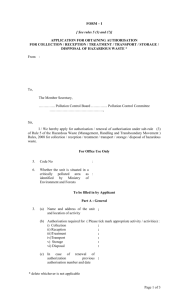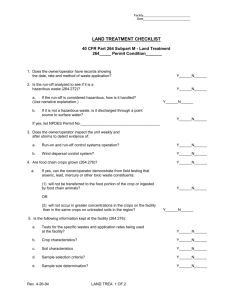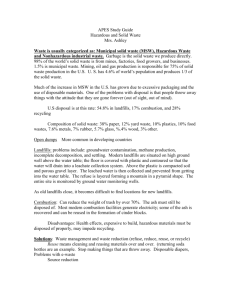Hazardous waste - Elizabeth School District
advertisement
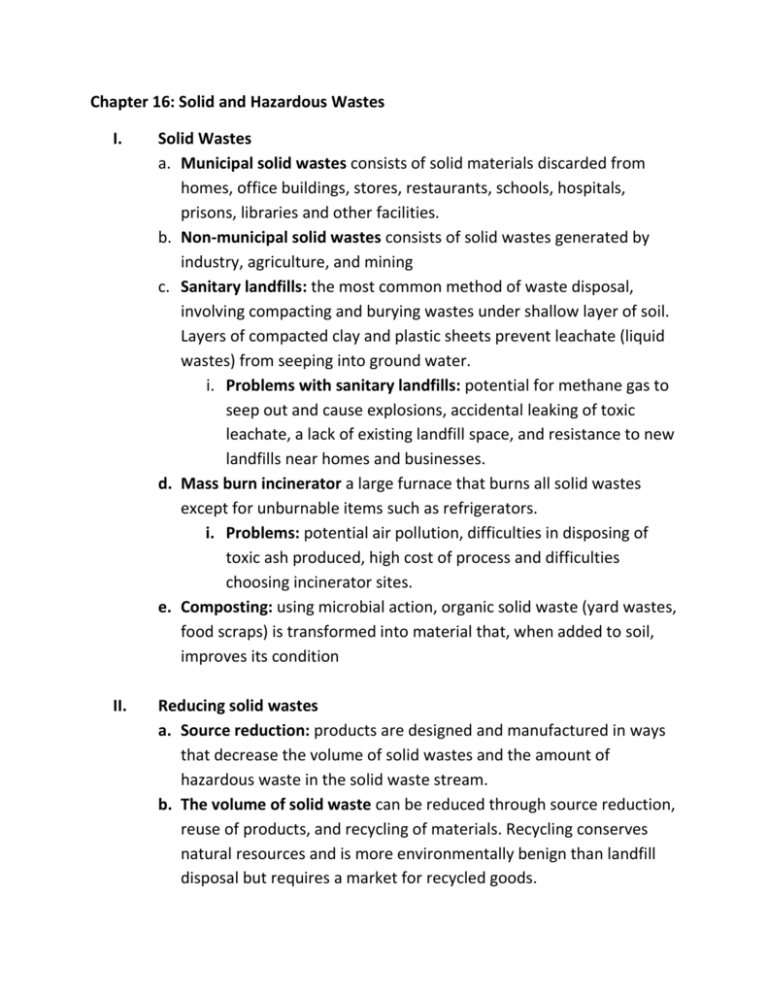
Chapter 16: Solid and Hazardous Wastes I. Solid Wastes a. Municipal solid wastes consists of solid materials discarded from homes, office buildings, stores, restaurants, schools, hospitals, prisons, libraries and other facilities. b. Non-municipal solid wastes consists of solid wastes generated by industry, agriculture, and mining c. Sanitary landfills: the most common method of waste disposal, involving compacting and burying wastes under shallow layer of soil. Layers of compacted clay and plastic sheets prevent leachate (liquid wastes) from seeping into ground water. i. Problems with sanitary landfills: potential for methane gas to seep out and cause explosions, accidental leaking of toxic leachate, a lack of existing landfill space, and resistance to new landfills near homes and businesses. d. Mass burn incinerator a large furnace that burns all solid wastes except for unburnable items such as refrigerators. i. Problems: potential air pollution, difficulties in disposing of toxic ash produced, high cost of process and difficulties choosing incinerator sites. e. Composting: using microbial action, organic solid waste (yard wastes, food scraps) is transformed into material that, when added to soil, improves its condition II. Reducing solid wastes a. Source reduction: products are designed and manufactured in ways that decrease the volume of solid wastes and the amount of hazardous waste in the solid waste stream. b. The volume of solid waste can be reduced through source reduction, reuse of products, and recycling of materials. Recycling conserves natural resources and is more environmentally benign than landfill disposal but requires a market for recycled goods. III. IV. c. Integrated waste management: a combination of the best wastes management techniques into a consolidated program to deal effectively with solid waste. Hazardous waste a. A discarded chemical that threatens human health or environment. Hazardous chemicals may be solids, liquids, or gases and include a variety of acids, dioxins, abandoned explosives, heavy metals, infectious wastes, nerve gas, organic solvents, PCB’s, pesticides, and radioactive substances. i. Dioxins are hazardous chemicals formed as unwanted byproducts during the combustion of many chlorine compounds. ii. PCB’s (polychlorinated biphenyls) are hazardous, oily industrial chemicals composed of carbon, hydrogen, and chlorine. Managing hazardous wastes: a. Resource Conservation and Recovery Act (RCRA): instructs the EPA to identify hazardous waste and to provide guidelines and standards for state’s hazardous waste management programs b. Comprehensive Environmental Response, Compensation, and Liability Act (CERCLA) or Super Fund Act established a program whose goal is to clean up abandoned and illegal toxic waste sites across the United States. c. The most effective approach to managing hazardous waste is source reduction, reducing the amount and toxicity of hazardous materials used in industrial processes. Source reduction relies on green chemistry, a subdiscipline of chemistry in which commercially important chemical processes are redesigned to reduce environmental harm. \ Brownfield land i. Property where the reuse of the land may be complicated by the presence of hazardous materials ie gas stations, dry cleaning stores, factories, mills, foundries


